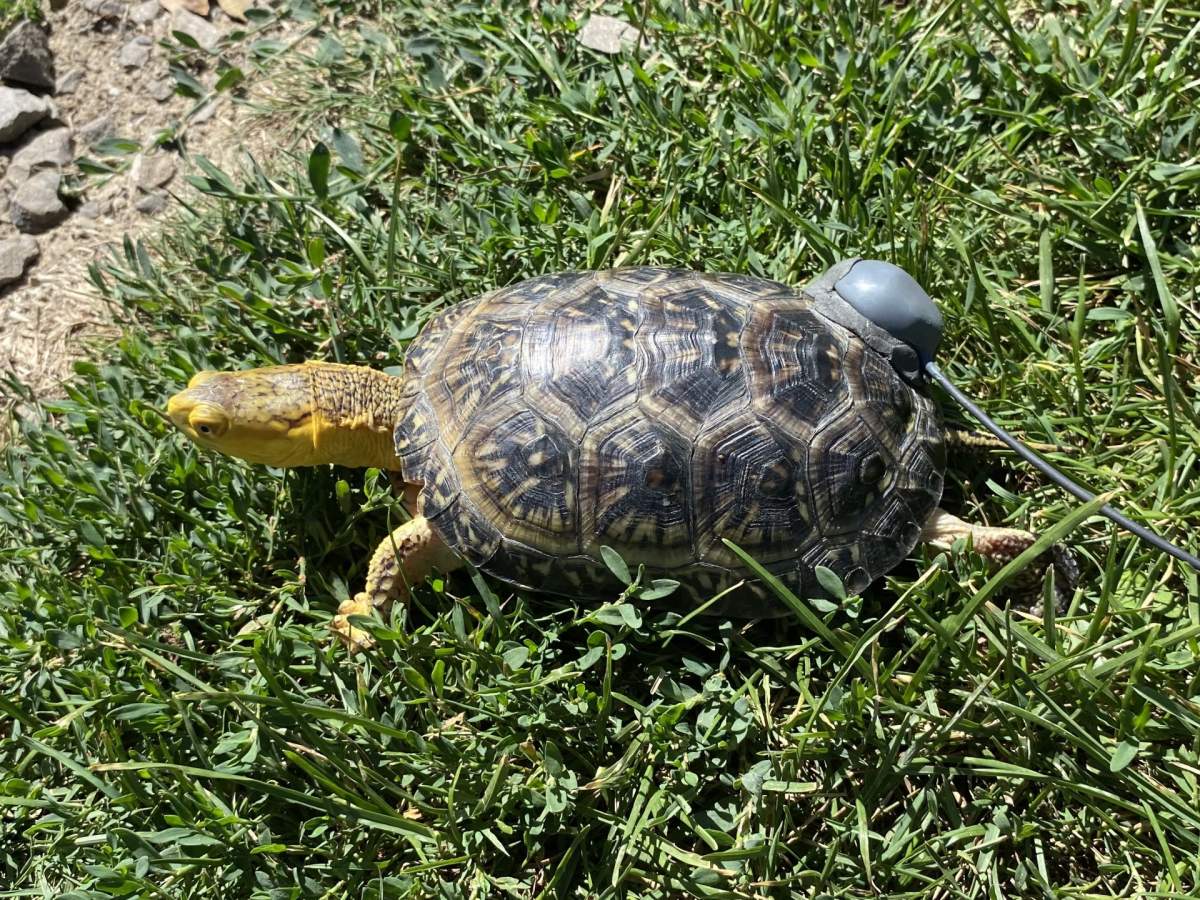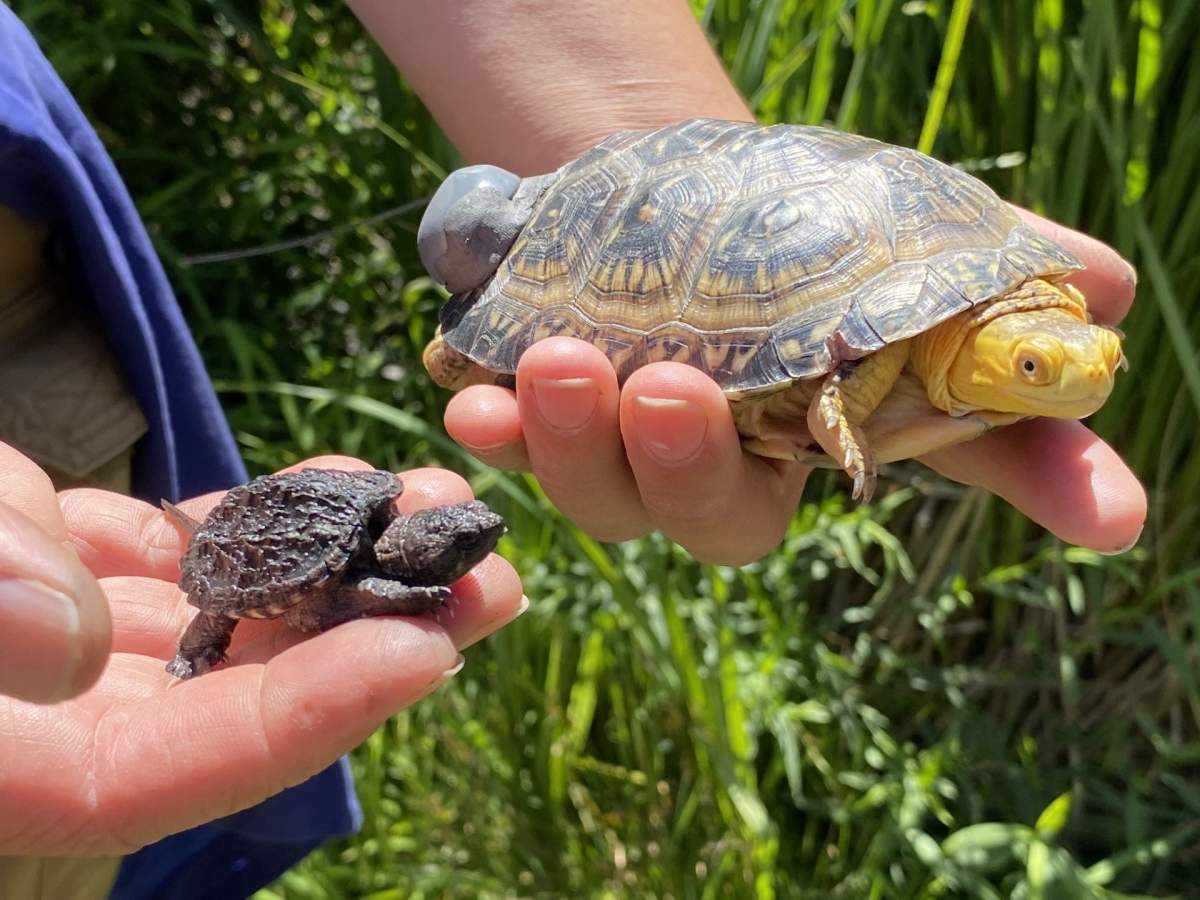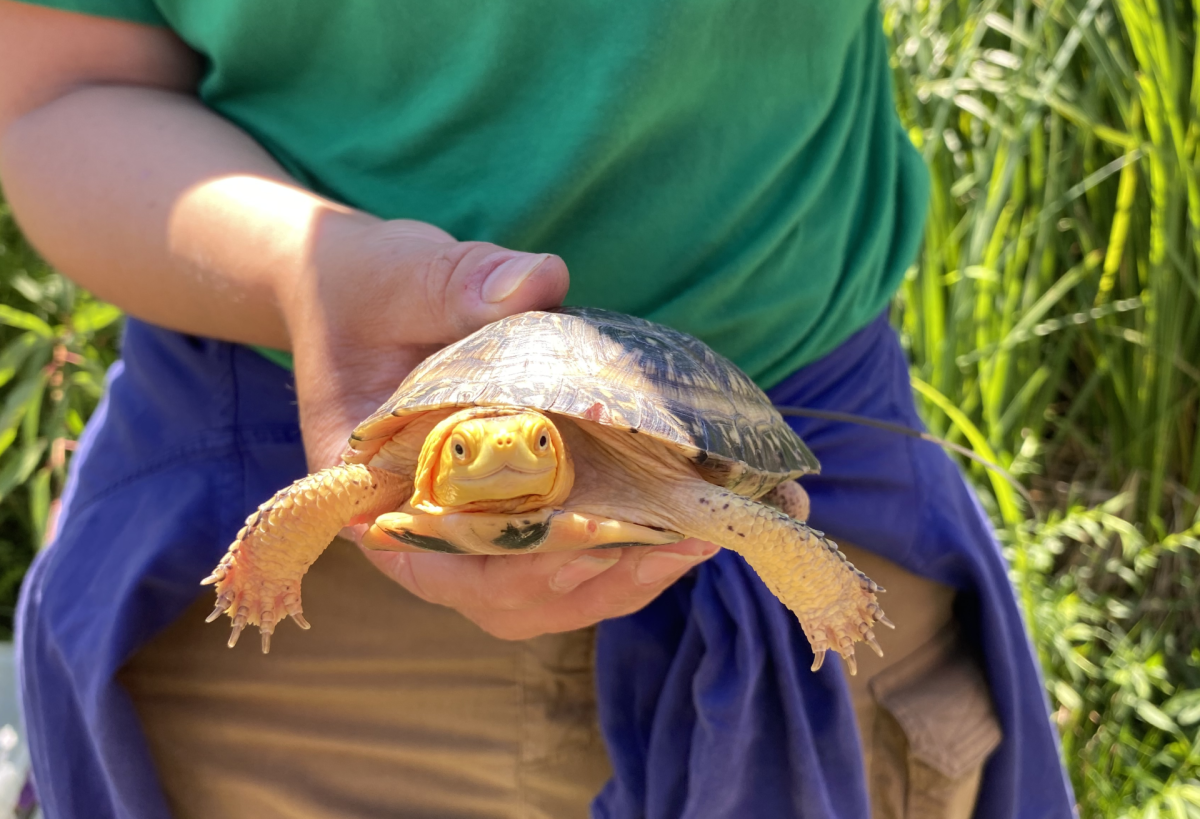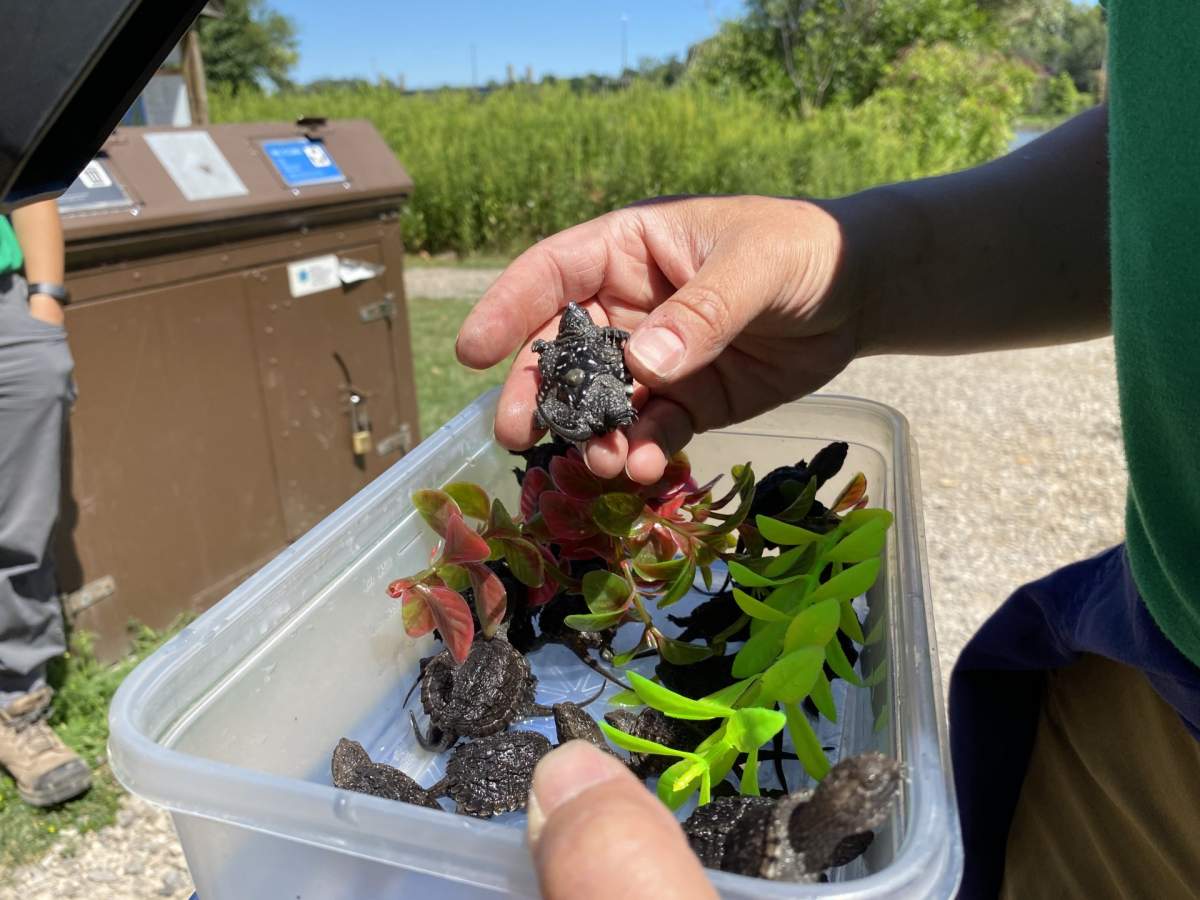A member of the most threatened turtle species in the Hamilton-Burlington region has a new home in Cootes Paradise.

Biologists with the Royal Botanical Gardens (RBG) released Niigaani, a two-year-old Blanding’s turtle, into the wetland on Friday.
It’s the first Blanding’s turtle to be released into Cootes since 2015.
The turtle was rescued from the RBG two years ago and has been at a head-start rehabilitation program at Scales Nature Park in Orillia since then, growing much larger than it would in the wild.
Sarah Richer, a biologist with the RBG’s “Species At Risk” team, said Niigaani — whose name is a non-gendered Ojibwe word that translates to ‘she or he goes forward’ — is one of two hatchlings found by people who had been kayaking or canoeing in Cootes in August 2020.
“One of the parts of RBG’s turtle recovery plan is public engagement, and that has phenomenally increased in these last few years, where we invite people to provide us their sightings of turtles that they see on land and to contact the RBG,” said Richer.
“They’re responsible for — generally, every year on average — at least 80 per cent of the turtles that are rescued from unsafe areas and of the nests that are retrieved from unsafe areas. So clearly, this can’t be left alone to just one or two staff members to do it all.”
She said the odds of someone finding not just one, but two Blanding’s turtle hatchlings in the wild is “astronomically small.”
The other hatchling didn’t survive, but Richer said Niigaani has been able to grow in a safe environment, thanks to the extra nourishment and protection it received at the head-start program, and is now ready to be let loose in the wetland and hopefully fend off predators with its larger size.
The only thing is, it’s not clear if Niigaani is a male or a female, and that won’t be possible to determine until the turtle reaches a mating age of between 17 and 20 years old.
“One of the things that’s hurting them so much is because it takes them so long to reach sexual maturity and there are so many factors that can eliminate them from the population before they reach that point. That makes them as a population highly susceptible to local extirpation and eventual extinction by even the removal of a few adults a year.”
Right now, there is only one confirmed female Blanding’s turtle in Cootes — a turtle named Seneca — and about seven other females in nearby Hendrie Valley.

Get daily National news
Of those seven, Richer said four have had to be rescued at various points during the past five years, from situations ranging from wandering into the road or getting stuck in places where they might not have been found without the transmitter attached to their shells.
“If it wasn’t for the transmitters, they’d be gone and we’d be down to two or three. So in five years, we could have lost what little bit we had left.”
Another three Blanding’s turtles that were from nests in Hendrie Valley are scheduled to be released later this year, but each turtle is legally required to be returned to the same watershed as its parent, so the only way to replenish the population in Cootes Paradise is to ensure adult turtles are able to survive and thrive in their habitat.
Part of that includes the ongoing remediation of Cootes following the four-and-a-half-year spill of 24 billion litres of sewage and untreated wastewater in Chedoke Creek.
Tys Theysmeyer, RBG’s head of Natural Lands, said that’s a process that is ongoing, with the actual removal of accumulated spill material expected to begin next week.
Meanwhile, a broader multi-decade remediation plan for Cootes is about halfway done.
“Bit by bit, the smaller odds and ends of where a pipe leaks in an old community are starting to be discovered and tracked down,” said Theysmeyer.
“So optimistically, we’re at best halfway there, though, and we’re hundreds of millions of dollars away from getting to the end.”
Niigaani and several dozen freshly hatched snapping turtles were released in undisclosed locations in Cootes on Friday, kept secret to prevent poaching.
Richer said they’re continuing to monitor the local turtle population but heavily rely on the support of the community through RBG membership fees, donors like the K.M. Hunter Charitable Foundation, and volunteers.
“A lot of people are interested in the babies,” she said.
“And everyone wants to help them out, but frankly, if we don’t help out the adults, we’ll run out of these guys to help because the grown-ups are the ones that make the nests and the babies … so ultimately, habitat quality is key.”














Comments